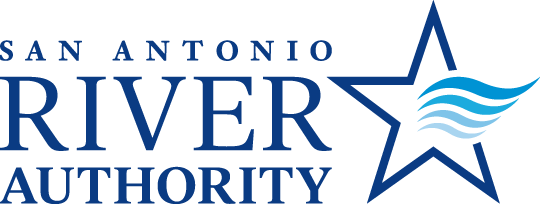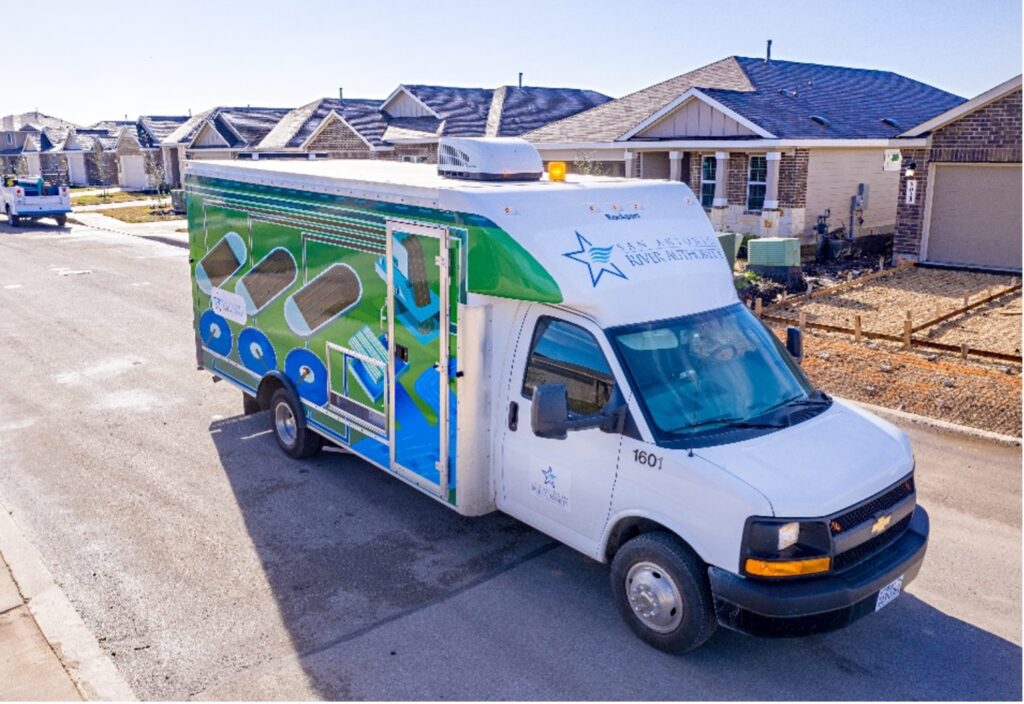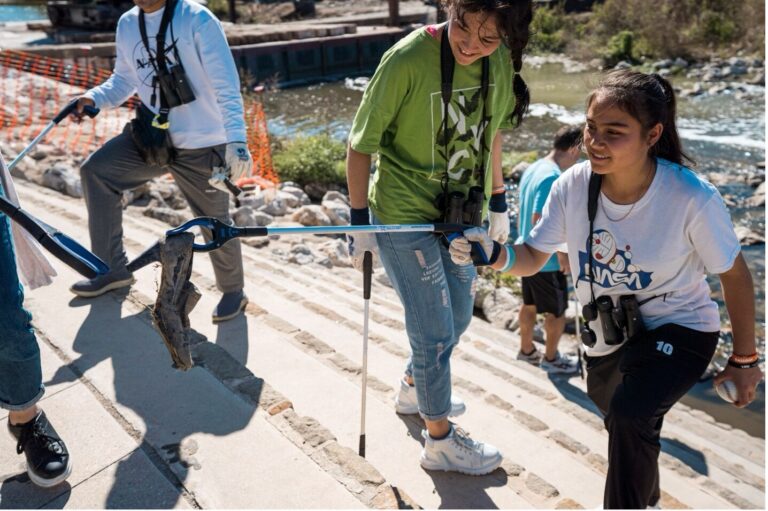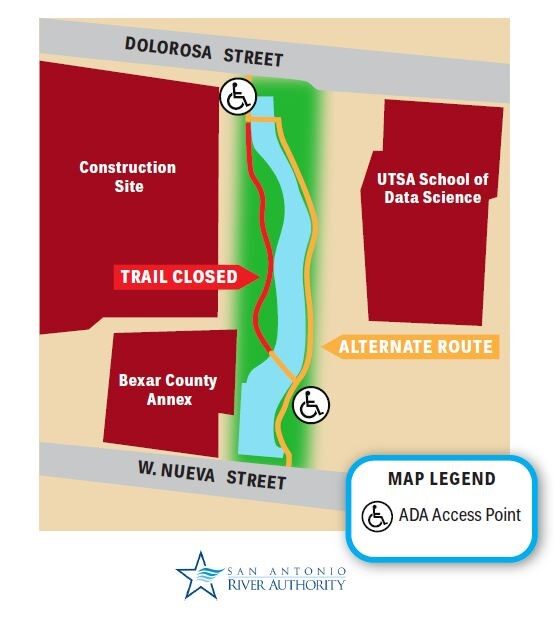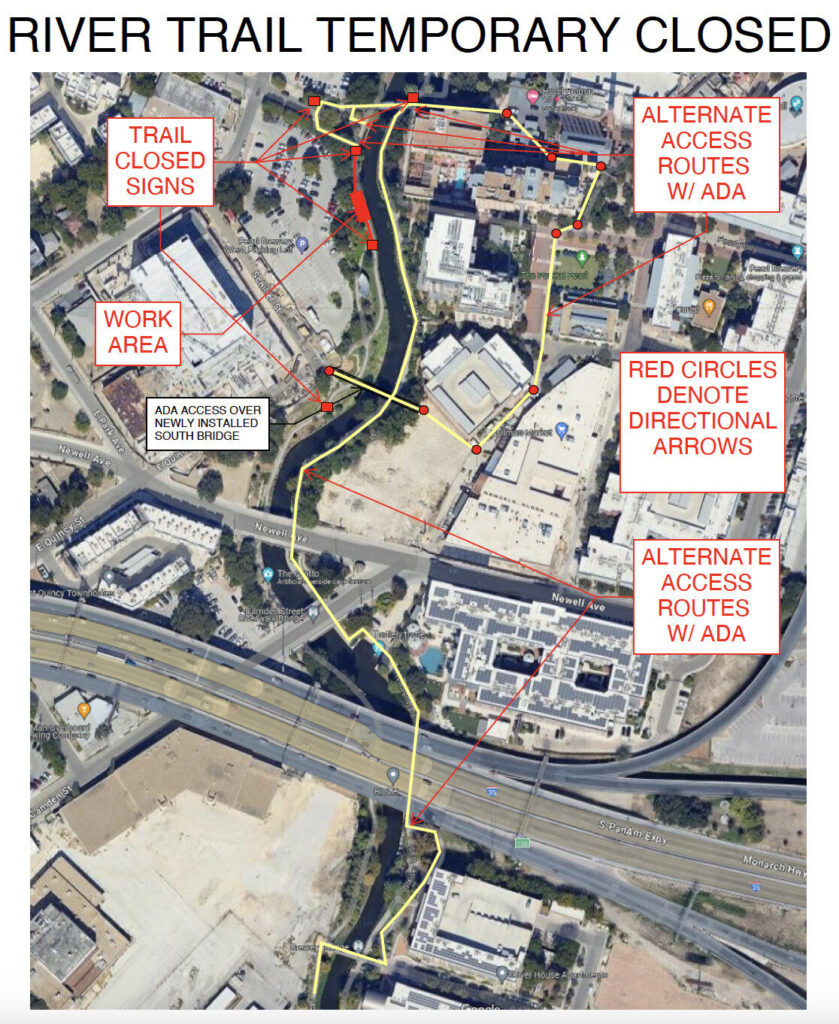Read Time: 3.5 Minutes
Welcome to our second installment of the San Antonio River Authority (River Authority) Utilities series. As we outlined in the introduction to this series, we will share what each team within our wastewater utility does, why it is essential, and how it impacts you!
In our last installment, we covered what our Development Team does. So, this time, it only makes sense to take a dive into the work of the team that takes over the next steps: the Collections Team!
What does the Collections Team do?
After the Development Team has completed their final acceptance and review of individual connections, the purview of the new sewer lines passes to the Collections Team. This team of eleven manages the sewer pipelines owned by the River Authority by focusing on preventative maintenance and responding to calls or emergencies from partners and customers. Preventative maintenance means checking and cleaning the sewer pipelines in a systematic way. This is done by using a closed-circuit television (CCTV), CCTV camera, and/or shooting water through the pipeline to dislodge buildup and debris.
The Collections Team checks the sewer pipeline using a CCTV Van.
That Art of Preventative Maintenance
On a day-to-day basis, the Collections Team checks the River Authority’s asset management system for both manholes and pipes to determine where they will be cleaning or checking pipelines. Pipes are televised or checked by lowering a CCTV camera down through a manhole into the pipeline using a small motor on the CCTV van—just imagine a remote-control toy car! The crew then reviews the footage in real-time through a computer station in the truck. This routine maintenance can 1) locate and prevent sanitary sewer overflows (SSOs) by catching a buildup of fats, oils, grease (FOG), and wipes and 2) assist in locating pipes in need of repair. Inflow and infiltration issues(I&I) can occur when water infiltrates into a closed sewer through broken or cracked pipes. Cracks in sewer pipelines can be caused by shifting soils in drought conditions or even tree roots growing into the pipes. I&I is an issue for every sewer provider around the world.
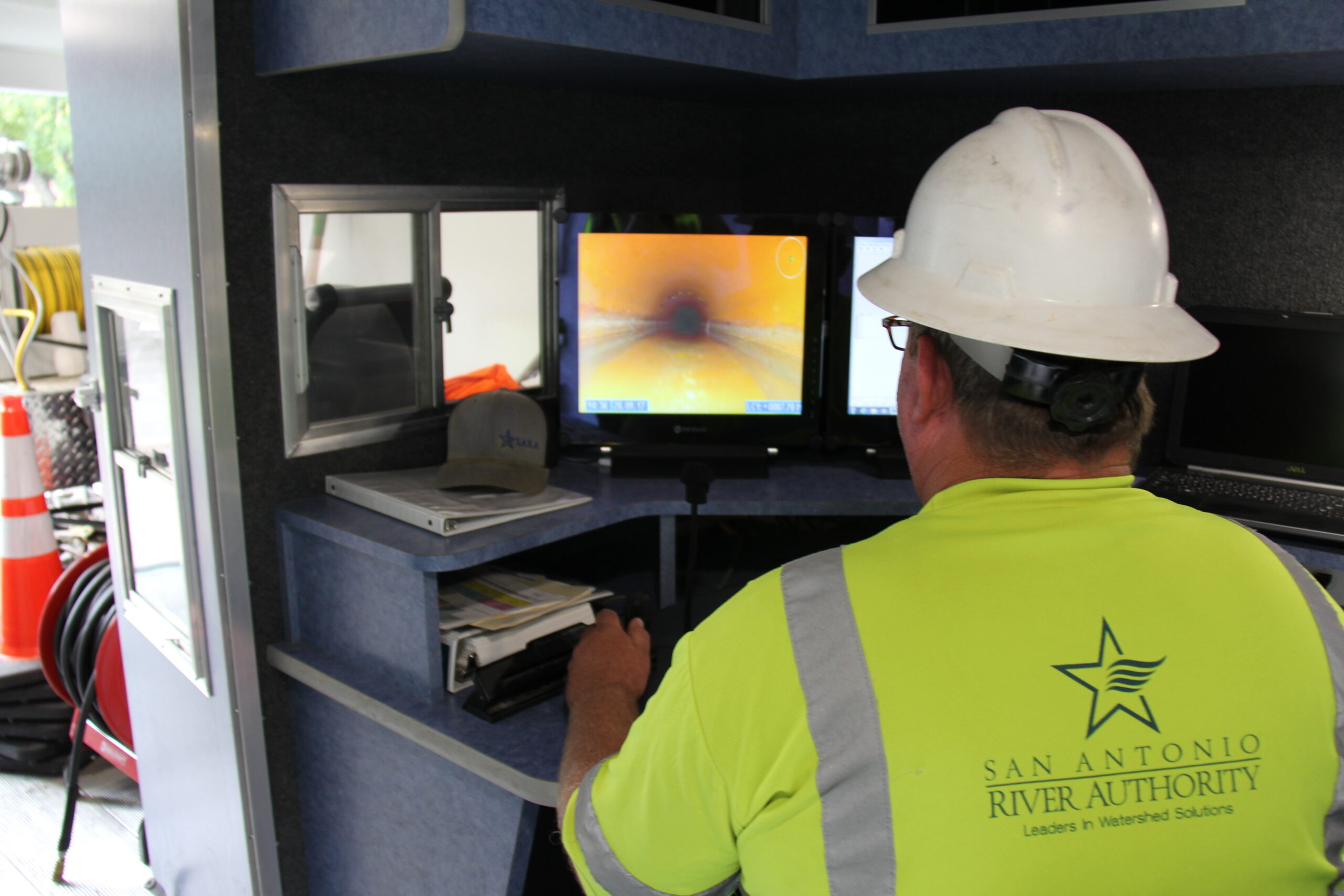
Team checking footage in the CCTV Van. You can see the inside of the sewer pipe on the CCTV screen.
Routine cleaning of sewer pipelines can be done by shooting water through the pipeline. Cleaning needs can be identified while crews are televising. However, the opposite can be true when the team is cleaning. When cleaning, the staff will keep an eye on the next nearest manhole. If the water being flushed with force does not appear at the connecting manhole, this is an indicator that there may be a buildup of FOG, wipes, a broken pipe, or the lair of the Teenage Mutant Ninja Turtles. Just kidding on that last one.
We have reviewed routine checking and cleaning of the pipes, but what happens when the team observes a crack from I&I or broken pipes?
I&I cracks are identified through televising and monitoring using the same industry standard CMOM program used for cleaning and checking. Depending on the severity of a broken pipe, the Collections Team may be able to do the repair. More extensive repairs may need to be included in the Utilities Capital Improvements Program. In addition to the preventative maintenance of pipelines, the Collections team also assists the Treatment and Operations Team with preventative maintenance at the wastewater treatment plants.
Let’s talk about callouts!
Pipeline cleaning and televising are the day-to-day operations of the collections team, but the team also responds to callouts. A callout is when a customer or partner (such as a city or business) reports an SSO. The team is the first on the scene of the SSO and immediately begins investigating the location of the issue. If the problem stems from an issue located on the River Authority part of the sewer line, the Collections Team takes care of the repair. In the case where the problem is located on private property, the property owner is notified of the problem and is requested to make the necessary repairs.
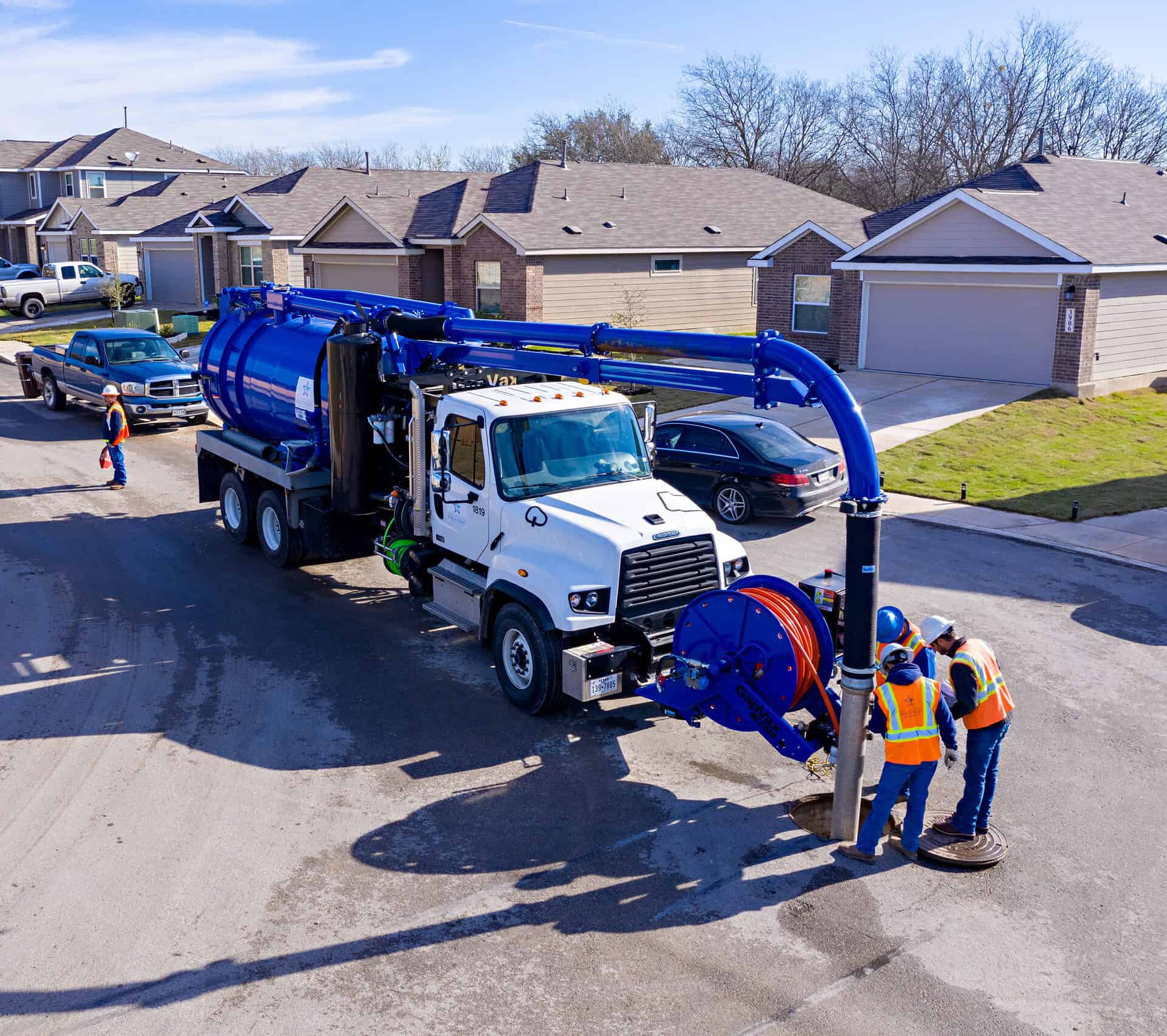
Crew cleaning sewer pipeline using water
What can I do to prevent an SSO?
Just like our Collections Team, you can also help keep our waterways clean and prevent SSOs in our community by doing your own preventative maintenance. It is easy!
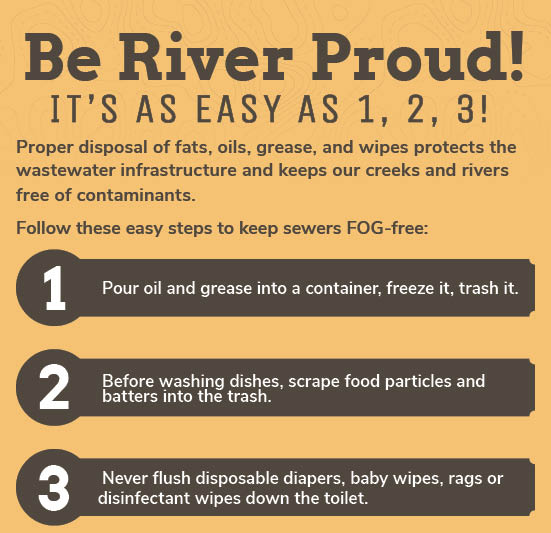
Check out our webpage for tips on how to keep your pipes clean and watch the video below to learn if “flushable” wipes are actually flushable. (Spoiler alert: They’re not.)
Thanks for reading about all the ways the River Authority Collections Team helps to provide essential services for our communities while protecting our local creeks and the San Antonio River. Subscribe to the blog today and be the first to read the next Utilities series, where we will take a deep dive into the work of the Treatment and Operations team!
The River Reach is back!
River Reach is a quarterly, 12-page newsletter that is designed to inform the San Antonio River Authority’s constituents about the agency’s many projects, serve as a communication vehicle for the board of directors and foster a sense of unity and identity among the residents of Bexar, Wilson, Karnes, and Goliad counties.
If you wish to be placed on the mailing list for River Reach, please contact us or complete the form.
